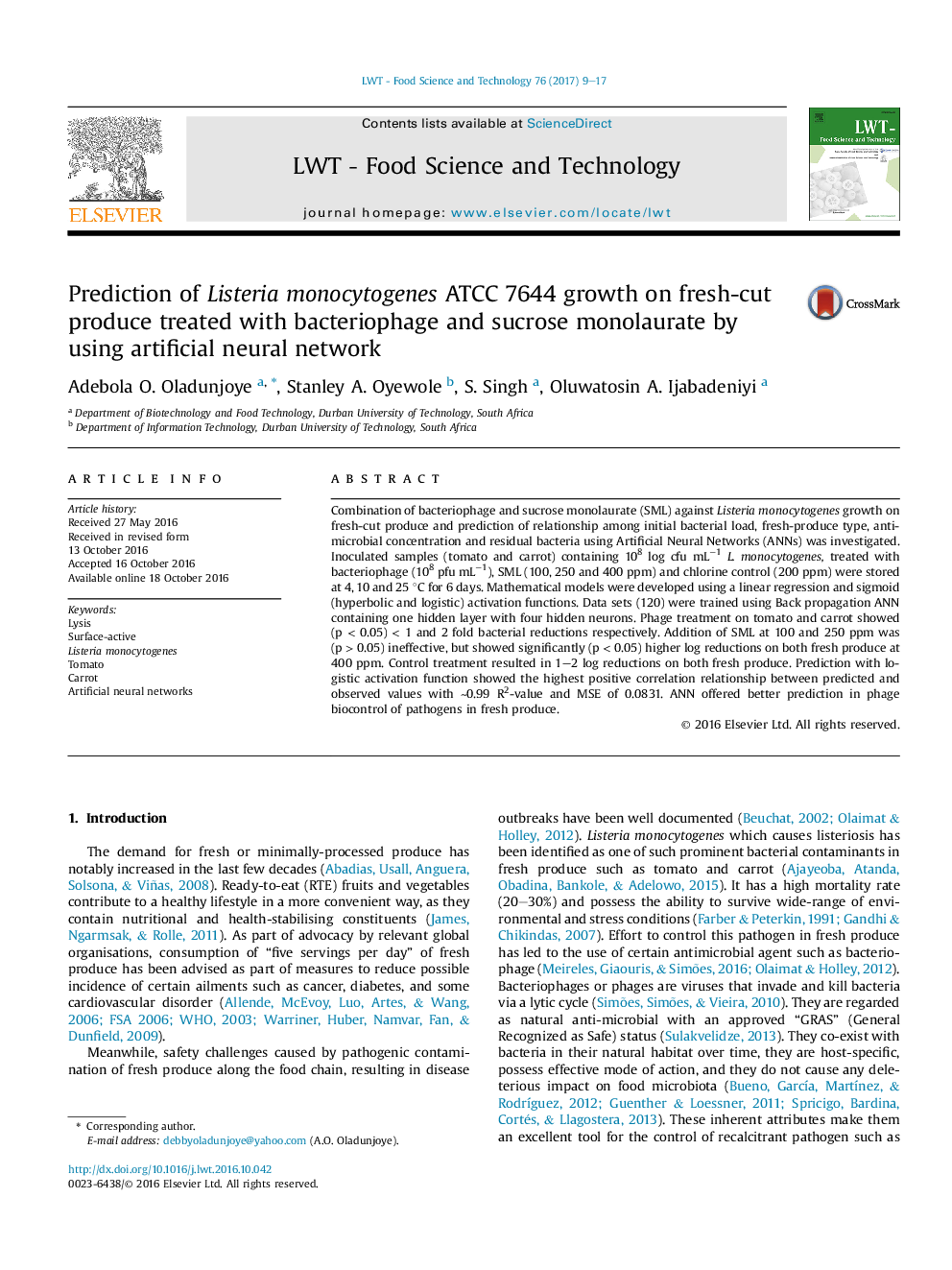| Article ID | Journal | Published Year | Pages | File Type |
|---|---|---|---|---|
| 4563241 | LWT - Food Science and Technology | 2017 | 9 Pages |
•Bacteriophage reduced Listeria monocytogenes on fresh-cut tomatoes and carrots.•Sucrose monolaurate at 400 ppm significantly enhanced phage lysis against L. monocytogenes.•Artificial neural networks offered a better prediction in phage combination with sucrose monolaurate.
Combination of bacteriophage and sucrose monolaurate (SML) against Listeria monocytogenes growth on fresh-cut produce and prediction of relationship among initial bacterial load, fresh-produce type, antimicrobial concentration and residual bacteria using Artificial Neural Networks (ANNs) was investigated. Inoculated samples (tomato and carrot) containing 108 log cfu mL−1L. monocytogenes, treated with bacteriophage (108 pfu mL−1), SML (100, 250 and 400 ppm) and chlorine control (200 ppm) were stored at 4, 10 and 25 °C for 6 days. Mathematical models were developed using a linear regression and sigmoid (hyperbolic and logistic) activation functions. Data sets (120) were trained using Back propagation ANN containing one hidden layer with four hidden neurons. Phage treatment on tomato and carrot showed (p < 0.05) < 1 and 2 fold bacterial reductions respectively. Addition of SML at 100 and 250 ppm was (p > 0.05) ineffective, but showed significantly (p < 0.05) higher log reductions on both fresh produce at 400 ppm. Control treatment resulted in 1–2 log reductions on both fresh produce. Prediction with logistic activation function showed the highest positive correlation relationship between predicted and observed values with ∼0.99 R2-value and MSE of 0.0831. ANN offered better prediction in phage biocontrol of pathogens in fresh produce.
